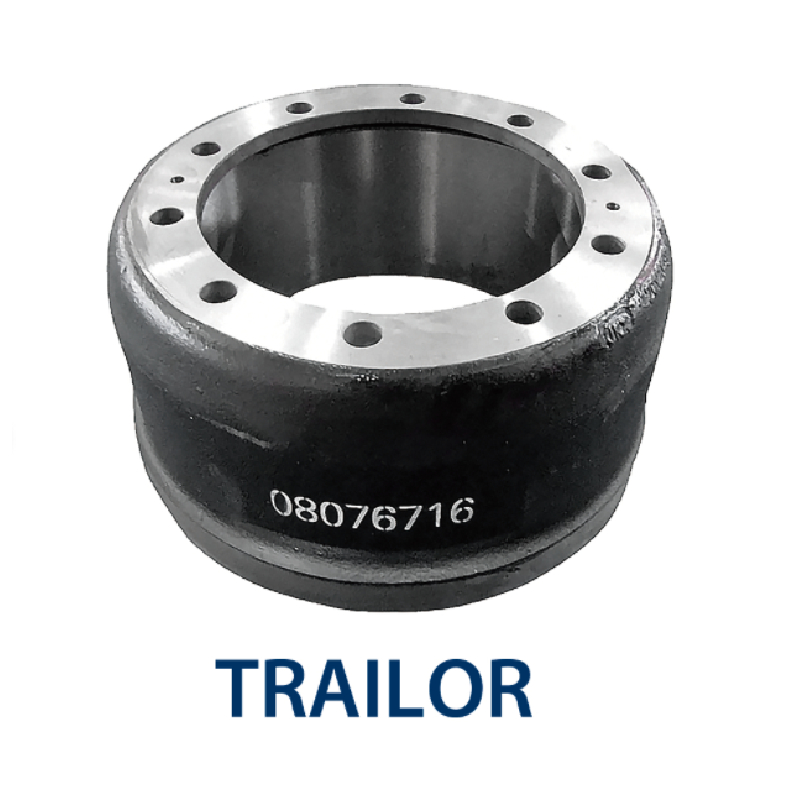ਸਤੰ. . 19, 2024 10:25 Back to list
brake drum to disc conversion
Converting from Brake Drums to Brake Discs An In-Depth Look
Brake systems are a crucial aspect of vehicle safety, and understanding the differences between brake drums and brake discs can greatly assist in making informed decisions when considering an upgrade. The conversion from brake drums to brake discs has gained popularity, especially among performance enthusiasts and those seeking improved stopping power and heat dissipation. In this article, we will explore the benefits of this conversion, the mechanics behind each system, and factors to consider when making the switch.
Understanding Brake Drums and Brake Discs
Brake drums are cylindrical components that house the brake shoes. When the brake pedal is pressed, hydraulic force pushes the shoes against the inner surface of the drum, creating friction to slow down or stop the vehicle. This system is often found in older vehicles and in the rear brake setups of many modern cars, offering adequate stopping power for everyday driving.
On the other hand, brake discs, also known as rotors, utilize a different mechanism. The brake caliper squeezes brake pads against the outer surface of the disc when the pedal is pressed. This design enhances the system's efficiency for several reasons, including better heat dissipation, reduced fade under high-performance conditions, and more responsive braking.
Advantages of Converting to Brake Discs
1. Improved Stopping Power The primary advantage of converting to brake discs is the improved stopping performance. Discs provide more effective and consistent braking under various conditions, especially during heavy braking situations.
2. Heat Dissipation Brake discs are better at dissipating heat. Brake drums can overheat, leading to brake fade—where the brakes lose effectiveness due to excessive heat buildup. The vented design of many brake discs allows for increased airflow, reducing temperatures during operation.
3. Lower Maintenance While brake drums may require periodic adjustments to maintain proper clearance, brake discs generally offer a more straightforward maintenance routine. They can be visually inspected, and worn brake pads can be replaced without adjustments to a drum setup.
brake drum to disc conversion

4. Lightweight Design Brake discs tend to be lighter than drum systems, which can contribute to better overall vehicle dynamics and performance.
Considerations for Conversion
While the benefits of converting to brake discs are compelling, a few considerations should be kept in mind
- Cost Upgrading to disc brakes can be a costly endeavor. It often involves not only the purchase of new rotors and calipers but also potential modifications to the vehicle’s suspension or braking system.
- Installation Complexity The conversion process may require professional installation, especially if the vehicle was not designed for disc brakes. Proper alignment and calibration are crucial for safety.
- Vehicle Compatibility Not all vehicles can accommodate disc brakes without significant modifications. Researching compatibility is essential to avoid unnecessary complications.
Conclusion
Converting from brake drums to brake discs can significantly enhance a vehicle's braking performance and overall safety. With improved heat dissipation, reduced brake fade, and lighter components, the benefits can be particularly advantageous for performance vehicles and those who frequently drive in demanding conditions. However, it’s essential to weigh the cost, installation complexity, and vehicle compatibility before making the switch. Ultimately, the decision should align with the driver's needs, preferences, and driving style, ensuring a safer and more enjoyable driving experience.
-
Iveco Brake Drum | Premium OE Quality for Daily & Eurocargo
NewsAug.22,2025
-
Your Brake Drum Man: Quality & Performance Parts
NewsAug.21,2025
-
Explore Japan: Ultimate Travel Guide & Authentic Experiences
NewsAug.19,2025
-
Your Brake Drum Man: Premium & Reliable Brake Drums for Sale
NewsAug.18,2025
-
ROR Web Development: Build Fast, Scalable, Secure Apps
NewsAug.17,2025
-
Scania Brake Drums: OEM Quality for Optimal Safety & Durability
NewsAug.16,2025
